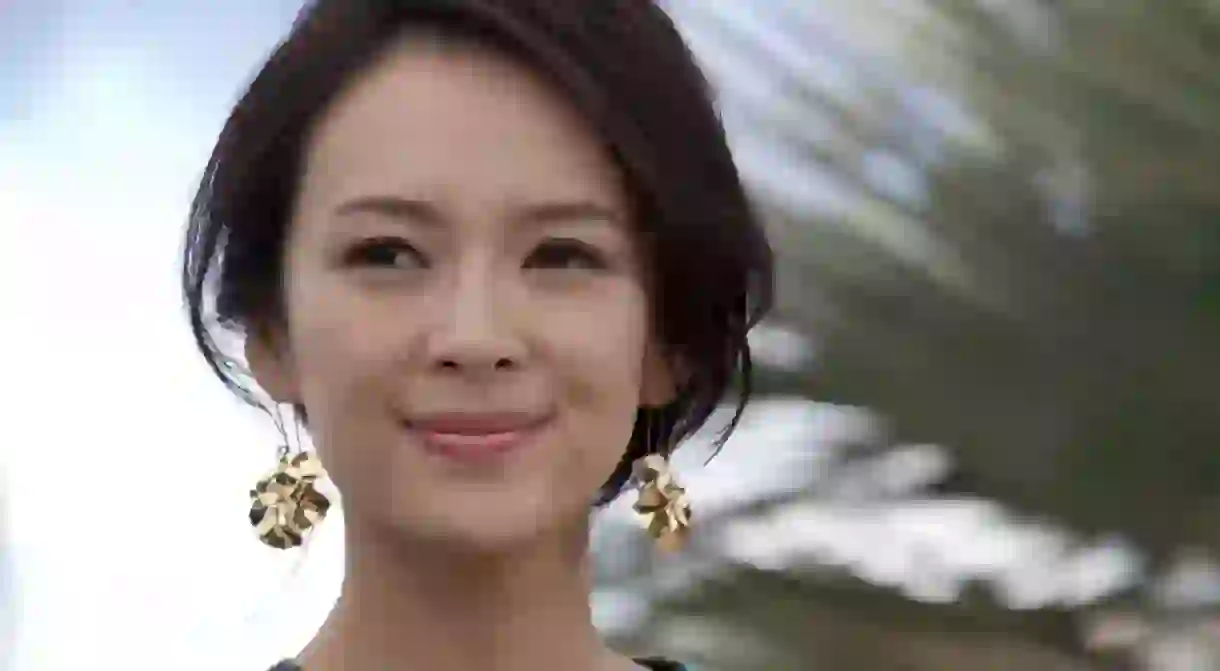China's Glorious And Terrible Past in 10 Movies

From the Warring States era through the rise of Communism, China has passed through eras alternately bloody and peaceful, depressed and prosperous. Here are 10 modern films that display the extremes and peculiarities of Chinese history in glorious colour.
Farewell My Concubine (1993)
A key film that helped bring Chinese cinema onto the international stage, Chen Kaige’s Farewell My Concubine takes its title from the opera that the protagonist often stars in. The only Chinese-language film to win the Cannes Palme D’Or so far, it depicts the lives of two opera troupe singers across a span of over 50 years, and how the tumultuous politics of the 20th century adversely affects their lives. Both tragic and stark in its portrayal of human emotions and life, it is a superb study of humanity in all its glory and ugliness.

The Blue Kite (1993)
Despite being banned by the Chinese authorities, Tian Zhuang-zhuang’s The Blue Kite found a receptive international audience. It is told from the perspective of a young boy whose upbringing in 1950s and 1960s Beijing is greatly affected by the Cultural Revolution and the Anti-Rightist Movement. The film sharply portrays events of great political significance, such as the Hundred Flowers Campaign and the Great Leap Forward.
Hero (2002)
Zhang Yimou’s Hero, set during the First Imperial Dynasty in the 3rd Century BCE, is loosely based on the legend of Jing Ke’s attempt to assassinate the first emperor of China. It tells the story of a nameless prefect who attempts to win the King of Qin’s trust by describing how he eliminated three assassins who had made unsuccessful attempts on the emperor’s life. The film makes subtle use of the “Rashomon effect” to underscore the unreliability of human narration. Zhang’s skillful use of colour highlights the differences between the narrations. Hero is a visual treat and a potent exploration of sovereignty, trust, and what it means to be a true hero.

Balzac and the Little Chinese Seamstress (2002)
Adapted by Dai Si-jie from his novel and directed by him, Balzac is a semi-autobiographical account of how two “bourgeois'” boys are sent for “re-education” in a remote Sichuan Province village during the 1960s Cultural Revolution. The boys and a beautiful seamstress find solace in reading a hidden collection of banned Western books, their favourite being Balzac’s Ursula Mirouêt. A coming-of-age story that touches upon the themes of love and intellectual enlightenment, the film is a remarkable study of youthful resilience overcoming adversity. The heavy use of the Sichuan dialect gives the film a delightful local flavor.
The Banquet (2006)
The Banquet, inspired by Hamlet and Ibsen’s Ghosts, is a tangled tale of revenge, political intrigue, and fatal ambition. In the 10th century, the son of the murdered Chinese emperor struggles to survive the conspiracies and assassination attempts planned by his usurping uncle. Though slightly farcical in its multiple deaths and ambiguously abrupt ending, Feng Xiao-gang’s film boasts wonderful dance and fight choreography.

Fearless (2006)
Based on the life of martial artist Huo Yuan-jia, Ronny Yu’s Fearless is a touching story of loss and redemption in the years preceding the birth of the Chinese Republic in 1912. It shows how a man whose belligerence and arrogance caused him to lose everything restored China’s honor by defeating foreign fighters — boosting the nation’s morale at a time of humiliation and foreign domination. As well as showcasing different types of martial arts, the film defines Chinese male virtue as a combination of courage, resilience, and dignity.
The Curse of the Golden Flower (2006)
Zhang Yimou’s film, set in imperial China, was based on Cao Yu’s play Thunderstorm, another work influenced by Ibsen’s Ghosts. It recounts the story of a failed coup against a fictional Chinese Emperor by his wife. Ugly revelations of adultery and incest emphasise the depravity, corruption, and decay of the royal household. The massive $45 million budget was partly spent on creating the sumptuous period look. The film was shot on a special type of celluloid that created a luxurious golden sheen. Despite the film’s beauty, its reviews were lukewarm.

Lust, Caution (2007)
Ang Lee’s espionage thriller, which was adapted from Aileen Chang’s novel, proved controversial because of its intimate sex scenes. Mainly set in Japanese-occupied Shanghai during World War II, it’s about a group of nationalist students who attempt to assassinate a high-profile Chinese government official working for the Japanese. Praised for its skilful combination of sensuality and tension, the movie is a near perfect evocation of early 1940s Shanghai.
Red Cliff Parts 1 & 2 (2008-09)
John Woo’s two-part epic depicts important events in the Three Kingdoms period of China in the 4th Century AD. It is a highly dramatic and speculative account of the battle of Red Cliff, one of the many points of conflict between Cao Cao (prime minister of China and de facto ruler) and Sun Quan and Liu Bei (established rulers of different Chinese kingdoms who had formed a splinter faction). Red Cliff was lauded for its impressive cinematography, entertainment value, quirks of intermittent humour, and battlefield sequences.

The Grandmaster (2013)
Selected as the Hong Kong entry for the Academy Awards, Wong Kar-wai’s 1930s period drama became a victim of its own box-office success and didn’t make the final Oscar shortlist. A biopic of Ip Man — the martial artist and teacher of Bruce Lee — it was praised by critics for its ambitious scope, superb characterisation, and clever blend of physicality and philosophy.













